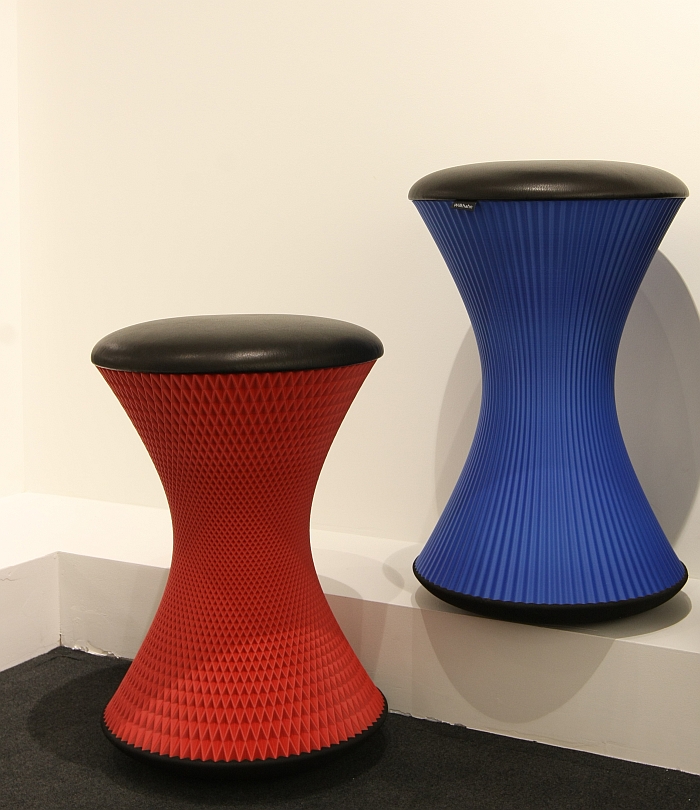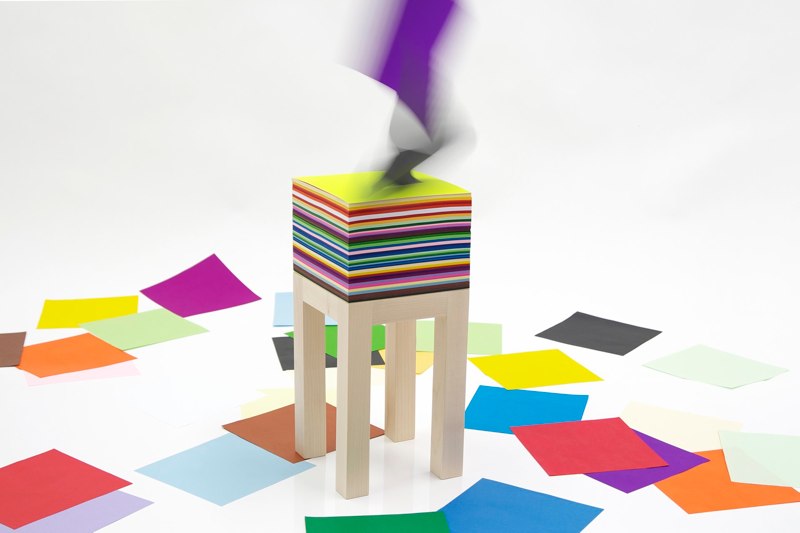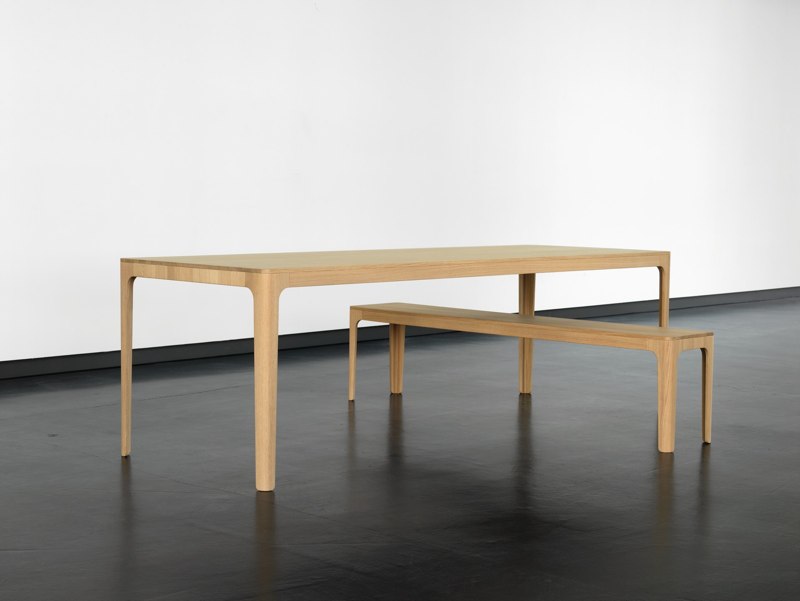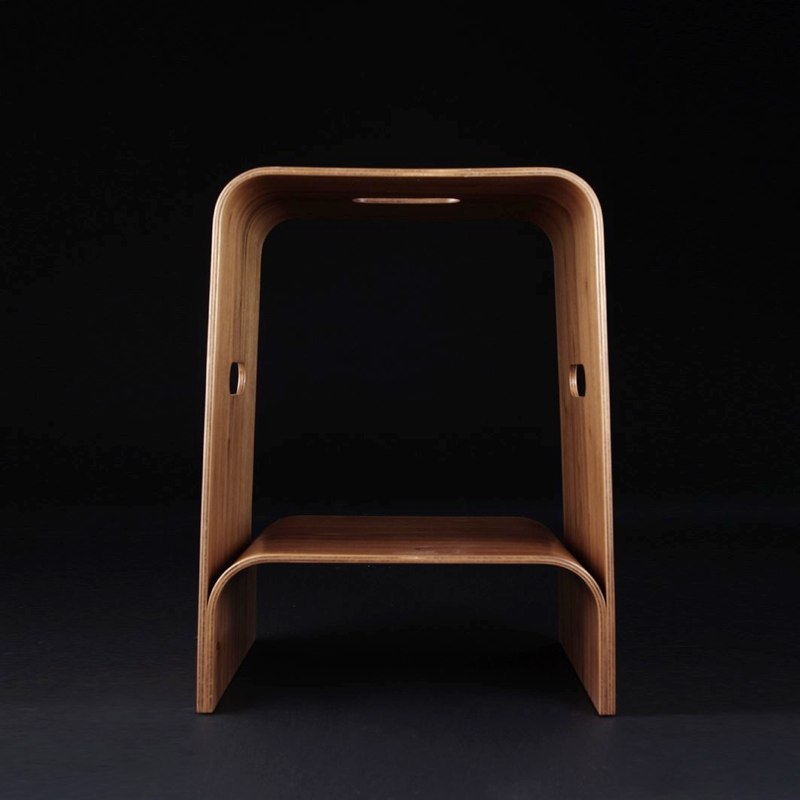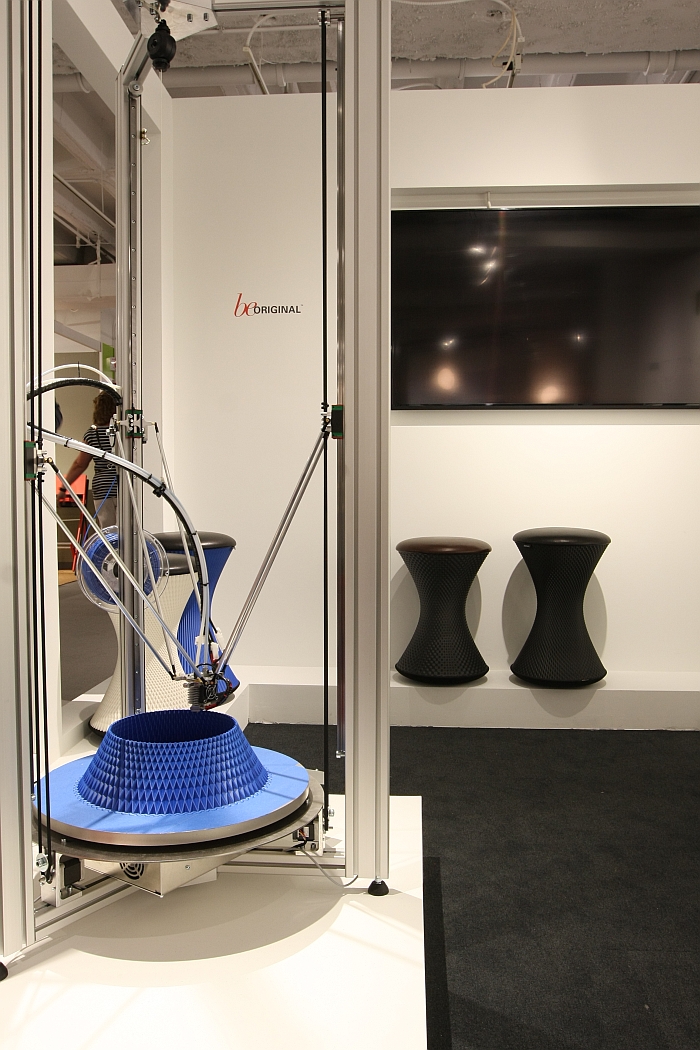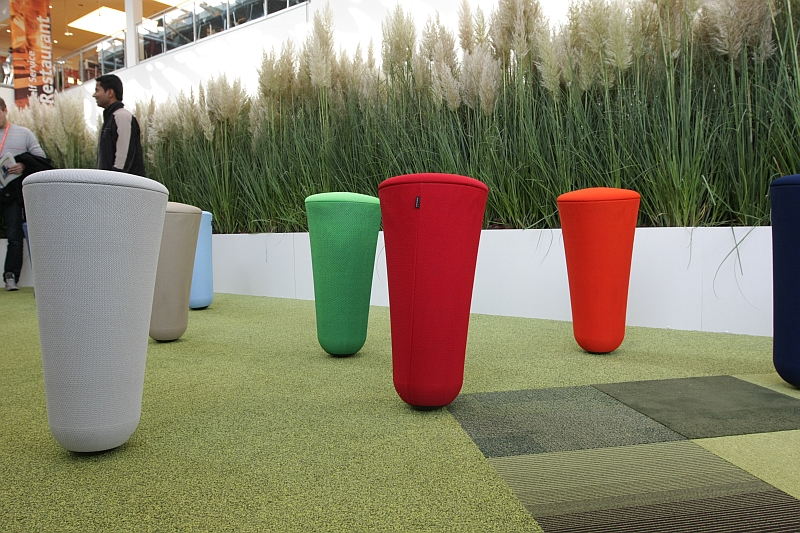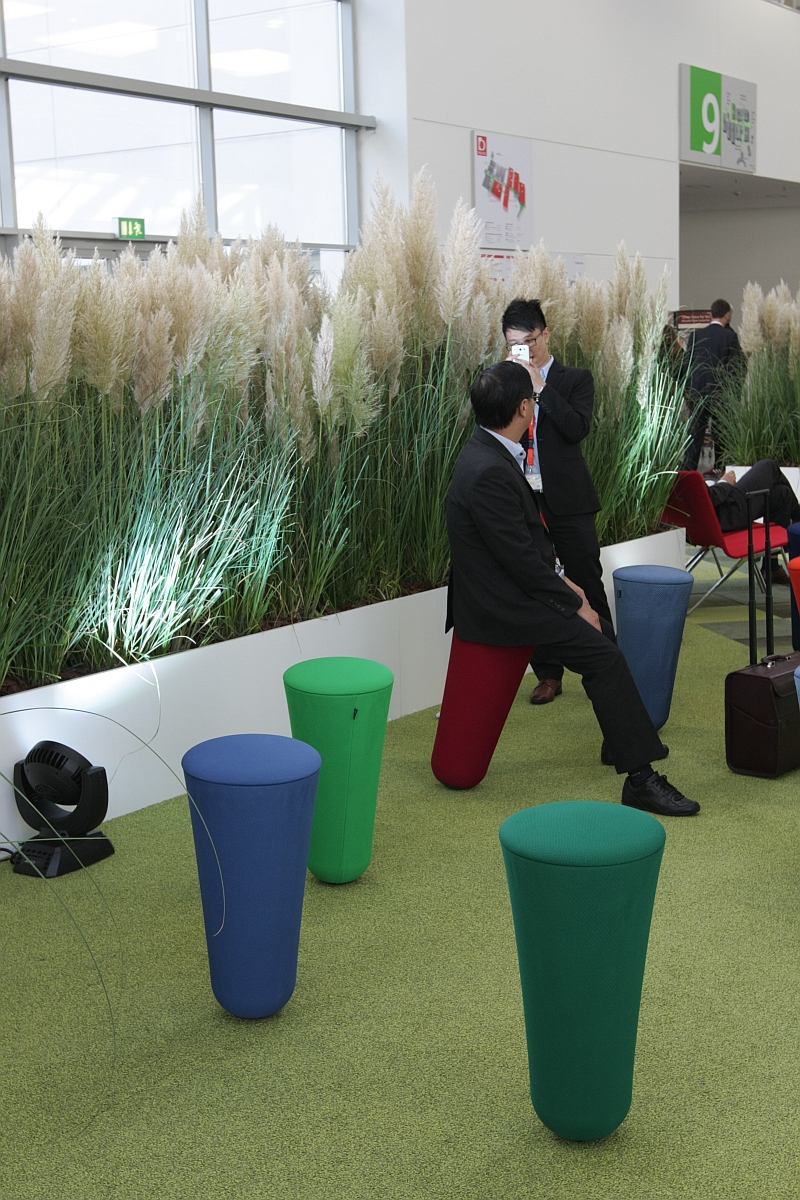smow blog Interview: Thorsten Franck – I understand design as an evolution, we make something, and then we make it better
One of our highlights of 2016 was without question PrintStool by Munich based designer Thorsten Franck for German manufacturer Wilkhahn. Less because of the object itself and more because of what it represents: the first step by a major furniture producer towards industrial 3D furniture printing. We met up with Thorsten in Munich to discuss PrintStool, 3D printing and the changing role of designers.
After completing a carpentry apprenticeship, and gaining his first practical experience, in his native Hamburg Thorsten Franck moved on to study industrial design, initially at the HAWK Hildesheim where he studied under the likes of Gottfried Böckelmann and Werner Sauer, and subsequently at the Royal College of Art, RCA, in London, the Professors at the time, Ron Arad and Jasper Morrison, being two designers, who as Thorsten somewhat understatedly phrases it, are “very different” in their approaches, albeit approaches which for Thorsten “both have their validity, both of which I find fascinating and both which in their own way have influenced my work.”
Following his graduation from the Royal College of Art Thorsten Franck initially established his own studio in London before moving to Munich in 2001, and from where over the past 15 years in addition to realising projects for national and international clients, he has participated in numerous group and solo exhibitions and held numerous teaching positions including tenures in Bozen, Burg Giebichenstein Halle and Munich
We first became aware of Thorsten’s work with his Stand-up stool for Wilkhahn which was premièred at Orgatec Cologne 2012 and which we noted was reminiscent of “an early Irvine Welsh short story – racy, impudent, undaunted.” PrintStool has the same carefree sense of adventure, the same naturalness and ease with itself, albeit with a greater sense of the responsibility inherent in it. So an Émile Zola work, should you wish to continue the literary comparison.
We met up with with Thorsten Franck in his Munich atelier to talk about his approach to his work, 3D printing as handcraft and the development of the PrintStool project, but began, as ever, by asking, why design?
Thorsten Franck: It was something I grew into. My background is very classic handcraft, but beyond carpentry I have always had an interest in historical developments in creative processes and so over time I arrived at design via handcraft, applied arts and also through in an interest in developments in production processes and materials. In addition, as a carpenter I felt myself a little restricted by this one material, and what I enjoy about industrial design is the freedom of working with any given material, and ultimately industrial design is a unification of form giving and production and so in a way was a logical next step after my carpentry apprenticeship.
smow blog: A logical step which took you to Hildesheim, London and ultimately Munich, which posses the obvious question, why Munich?
Thorsten Franck: Because of my wife…..
smow blog: ….it’s always relationships! We’ve yet to find a designer who has located themselves somewhere because of the local conditions, or because of the local traditions or opportunities!
Thorsten Franck: I am originally from Hamburg and so moving directly from Hamburg to Munich is a no-go. Hamburg-London-Munich is just about OK!! But I am extremely happy here because as a location it is excellent. In Munich one has a density of trades and crafts which is just sensational, and which I don’t think is comparable anywhere in Germany. Whether I need a partner for metalwork, glass, ceramics, whatever, but also, for example, specialists for 3D printing, I have it all here on my door step and that is fantastic. When I moved here I didn’t know that, however had I it might have been a deciding factor.
smow blog: We presume however that it still took a while to establish your studio…..
Thorsten Franck: The first years weren’t so easy, as with anywhere it takes a bit of time until you have established a reliable network, however as a city Munich is unquestionably a creative city, a design city, on the one hand one has the museums and other institutions, and then on the other there is a lot of work and commissions here, be that industry, commerce or private individuals.
smow blog: In terms of your work, you started with carpentry now work more digitally, but does the, let’s say, analogue still play a role, do you for example start with paper sketches?
Thorsten Franck: Yes, occasionally, but however I begin I always move very quickly onto models, what I always need is the physical context, to be able to actually touch and hold something, and so model building is always an important step. I work for example a lot with paper models, paper is a quick material with which you can build a volume without having to decide on a particular material. And modelling in many respects is also the reason I started with 3D printing. I work a lot with programmes such as Rhino or Grasshopper, and although you have a 3D programme, what you see is still 2D, and so I started printing things so that I have something in my hands and then I can really start to understand proportions, relationships, connections, so the grammar of industrial design.
smow blog: And then taking that grammar and forming a product, does your approach vary with material or…
Thorsten Franck: On account of my background my industrial design remains very rooted in traditional processes, and thus I tend to move over the process and the material, and then arises a form. In addition I am someone who observes a lot, and am fascinated by objects which have a naturalness, for me objects should have a certain integrity, should make sense, should have an honesty in their construction, a classic example is the mussel, and when one looks there are many naturally occurring examples of self stabilising systems and systems which function intrinsically and that is something I find very interesting.
smow blog: When we look at your work one of the defining features for us is the use of material or perhaps better put an attempt to use as little material as possible….
Thorsten Franck: I think that is simply about being mindful with materials and using them in a concious and sustainable manner. It is perhaps comparable to the philosophy of Frei Otto with his stretched, taught, surfaces, and working with dynamics rather than, for example, a material such as concrete. A concrete building is perhaps ten times more stable, has perhaps ten times the load bearing capacity, but employs far too much material for one structure, and with a different approach it might be possible to make ten buildings from the same amount of material.
smow blog: Which in a way also brings us back to the mussel……
Thorsten Franck:……exactly. In principle we are all lazy and the mussel is also lazy and so grows in such a way that it uses a minimum possible of resources. And today when we have limited material availability we must use them more consciously, must consider new systems, new materials, and with 3D printing one has a completely new way of considering how objects can grow. The PrintStool, for example, with its hyperboloid form is a very stable structure, yet has a very small surface area which makes it good to print with a minimum of material, and thus as with the mussel it grows with as little effort, and in the most natural and logical, way possible.
smow blog: And is also a very classic form, a proven form, if one traditionally realised in for example wood or wicker,…..
Thorsten Franck: ….. and the craftsmen who make such a stool out of wicker also use the simplest, most logical process to produce a stable object with as little effort as possible, and so in many respects for me 3D printing comes from handwork, it is all part of the same progression. And generally I understand design as an evolution, we make something, and then we make it better, it is a continuous development. And we make things better not only in terms of production technology or materials, but also in context of adapting to changing social or economic structures, and so I always try to go with this evolution and design objects for our time and which arise from our time. A role model for me in that respect is David Roentgen, a Baroque cabinet maker who always employed the newest materials and newest techniques in his work. And for me that is innovation, when I have understood what is already there and then consider what can I add with the new possibilities at my disposal.
smow blog: Which is a nice moment to turn to PrintStool itself, if we’re correctly informed it all started with your 7Days7Stools project which saw you create seven 3D printed stools in the course of a week, or….?
Thorsten Franck: Exactly, and is in may ways an excellent example of how I work, in that I experiment with processes and materials, develop a concept and then see where that takes me. At the beginning everyone considered 3D printing such a stool impossible, and to this day I don’t know why I believed in it, not least because the initial attempts all failed! Yet despite the fact that up until that point I had had only very little experience with plastics, I had faith in the principle, because for me the principle was so logical, and in a way I guess it seduced me!
smow blog: And now that it functions, do you understand why it didn’t function?
Thorsten Franck: The first attempts were small and very fine, industry always wants products to be refined and perfect, but that causes a lot of problems with such a 3D printing process. And so I decided to make everything much coarser, we don’t, for example, attempt to avoid the production traces, to make everything smooth and faultless, but rather accept that as an industrial process 3D printing also leaves traces of the production process. And now we have less problems. In addition when we started the software wasn’t that far developed, the machines weren’t particularly reliable, the materials weren’t particularly stable, everything was still in development and that is all much more advanced now.
smow blog: Can we presume that is also because you challenged them?
Thorsten Franck: I think so, but it is also this evolution. Improving the machines for example is a long process not least because it involves so many small aspects, for example optimising the nozzle sizes, but step for step you learn more and improve things. And so ultimately I am not sure what we have achieved with the project, if it is the object or the technology to produce such an object, including software and material. And that is what I find particularly satisfying about the project is that we co-developed in all areas and at the end realised a use for those developments .
smow blog: In which respect can one say that the idea was ready before the technology and material?
Thorsten Franck: It all developed together. Why should the technology develop when there is no material? And materials need an end use, a reason to exist. And that for me is an important component of this project, that the material producer has developed a material which is genuinely needed. Until now 3D printed objects were largely for show, not for real use, but with the new material new possibilities can be explored and real products developed.
smow blog: And on a practical, industrial, level, is 3D printing a genuine alternative to say injection moulding?
Thorsten Franck: With injection moulding the process is matter of seconds, with our process a matter of hours; however for injection moulding one needs very expensive equipment which we don’t need, instead we have a multi-function tool which allows us to work flexibly and individually. While in terms of energy consumption such a 3D printing process requires much less energy than other, more conventional, production methods. And so while yes for industrial production we may need a facility with several printers, that is I believe more sustainable than producing and storing numerous steel moulds and the associated energy and resource costs of injection moulding.
smow blog: And presumably also allows for local, de-central production….
Thorsten Franck: In effect we have developed a system that allows, for example, a stool to be printed. And so when the materials are available, machines are available then in principle everyone can print such a stool according to their wishes and requirements. Every village used to have a communal bakehouse, a central location where everyone could go and bake their bread, and what I like about out current society is the increased acceptance of sharing, a new acceptance of the communal, and so maybe from this we can develop a model similar to the bakehouse but where every community has a “Technology House” where all the necessary tools are available and where you can select from a virtual library and create our own furniture, and so ultimately I can well imagine a future in which there are no more furniture retailers.
smow blog: Which brings us nicely to Wilkhahn. You said that at the beginning no one believed in the project, how did Wilkhahn react when you first presented the project to them, were they also sceptical, or…..?
Thorsten Franck: To be honest I never really did present it to them. The first concept pieces were developed in context of the Stand Up project, and a couple of models were presented at Orgatec 2012, and shortly afterwards Wilkhahn approached me and said they had interest in the project. And so when we first started discussing the project it was really on their initiative.
smow blog: We’ll be honest, that surprises us a little, that it was a Wilkhahn who made the move…..
Thorsten Franck: I was also initially very surprised, however on consideration it fits in perfectly with the company history. Originally Wilkhahn produced wooden chairs, were one of many such companies in the area where they are based, and then after the war decided to look for new ways, new approaches and became involved with the Werkbund and subsequently were one of the first European manufacturers to work with glass fibre, plastics and generally to explore how new technology could be utilised for furniture production. Thus Wilkhahn unquestionably played an important role in the evolution of post-war design, and so in context of such a history PrintStool fits perfectly to a company such as Wilkhahn.
More information on Thorsten Franck and his work can be found at www.thorstenfranck.com
(Careful – Video with music!)
Tagged with: München, Munich, PrintStool, Thorsten Franck, Wilkhahn
